- News
- Reviews
- Bikes
- Accessories
- Accessories - misc
- Computer mounts
- Bags
- Bar ends
- Bike bags & cases
- Bottle cages
- Bottles
- Cameras
- Car racks
- Child seats
- Computers
- Glasses
- GPS units
- Helmets
- Lights - front
- Lights - rear
- Lights - sets
- Locks
- Mirrors
- Mudguards
- Racks
- Pumps & CO2 inflators
- Puncture kits
- Reflectives
- Smart watches
- Stands and racks
- Trailers
- Clothing
- Components
- Bar tape & grips
- Bottom brackets
- Brake & gear cables
- Brake & STI levers
- Brake pads & spares
- Brakes
- Cassettes & freewheels
- Chains
- Chainsets & chainrings
- Derailleurs - front
- Derailleurs - rear
- Forks
- Gear levers & shifters
- Groupsets
- Handlebars & extensions
- Headsets
- Hubs
- Inner tubes
- Pedals
- Quick releases & skewers
- Saddles
- Seatposts
- Stems
- Wheels
- Tyres
- Health, fitness and nutrition
- Tools and workshop
- Miscellaneous
- Cross country mountain bikes
- Tubeless valves
- Buyers Guides
- Features
- Forum
- Recommends
- Podcast
review
£4,199.99
VERDICT:
Beautiful looking race bike with an absolutely brilliant balance of comfort, speed, stiffness and sublime handling
Fast, comfortable, agile and stiff
Lovely aesthetics
White bar tape gets dirty quickly… yes, I'm struggling!
Weight:
7,990g
Contact:
At road.cc every product is thoroughly tested for as long as it takes to get a proper insight into how well it works. Our reviewers are experienced cyclists that we trust to be objective. While we strive to ensure that opinions expressed are backed up by facts, reviews are by their nature an informed opinion, not a definitive verdict. We don't intentionally try to break anything (except locks) but we do try to look for weak points in any design. The overall score is not just an average of the other scores: it reflects both a product's function and value – with value determined by how a product compares with items of similar spec, quality, and price.
What the road.cc scores meanGood scores are more common than bad, because fortunately good products are more common than bad.
- Exceptional
- Excellent
- Very Good
- Good
- Quite good
- Average
- Not so good
- Poor
- Bad
- Appalling
Orro has quite simply nailed it with the Venturi Ultegra Di2 Wind 400. Comfort, speed, handling, feedback and stiffness – you can have it all. And the icing on the cake? It's a looker too!
> Find your nearest dealer here
Ride
I've ridden a lot of bikes over the last 20 years, especially in the 10 that I've been with road.cc (41 in 2019 alone), and while a lot of them have been very good, there are probably ten or so that really stand out as brilliant – and the Venturi is one of those.
While beauty is in the eye of Noddy Holder and all that, I think the Orro looks stunning, especially in this pearlescent white and deep red paintjob; it just makes you want to go for a ride in the sun, and when that day finally arrived, I couldn't wait to get out.
As per usual, I roll out of the estate, turn right and give it a little dig up to the roundabout to make sure everything feels all right. It didn't, though.
The boxy section of the tubes and overbuilt chainstays that I'd cast my eye over in the house weren't behaving anything like I expected. I was geared up for a bit of resonation over the far from perfect road surface, or a little vibration through the handlebar, but there was none of it.
I even gave the bike a little bunnyhop to make sure the tyres weren't soft.
I'll go into this a little deeper in the next section of the review, but basically Orro – which, by the way, designs its own frames and doesn't use any open moulds – came up with three carbon fibre lay-ups for the Venturi in the prototype stage, and the bike you see here is the one it chose after plenty of test riding. It was definitely the right choice.
If you've read some of my previous reviews, you'll know that I like a stiff bike. I want that feeling of performance, and if that sacrifices comfort, I can deal with it. I like a frame that feels alive, a bit on the edge, I want to feel everything that is going on from that tiny rubber footprint on the ground, and if I need to take a little bit of a battering to get that then so be it.
The Venturi delivers that in spades, but the carbon lay-up used means it manages to do that while being very comfortable too, without taking anything away.
This means you can ride the Orro for hours at a decent pace with little fatigue. It's not the sharpest handling race bike I've ridden but it isn't far off, and you can really take those descents with the bit between your teeth and not really feel out of your depth. The Venturi just flows between bends and gives you that surefooted feeling of confidence.
For the majority of the time the Orro feels like an endurance bike with a racy edge, but when you really want to push it, get out of the saddle or head out for a lunch hour blast, it certainly delivers on performance.
The model we have comes with the Fulcrum 40mm-deep Wind 400 wheelset, which adds to the aero design of the frame, and once you get it above the 23mph to 25mph mark it certainly shifts.
If you need to get out of the saddle for a short, sharp climb or a bit of sprinting, you won't be left wanting when it comes to bottom bracket stiffness. This thing is responsive, and while disc brake-equipped bikes still can't challenge in terms of weight against rim braked versions, the overall 7.99kg certainly doesn't hold you back.
On the whole, I can't fault its ride. As I'm entering my non-competitive days it does everything I want from a road/race bike. It's quick, delivers the excitement I like, and is just so damn fun to ride no matter how long I'm out for.
Frame and fork
The frame features spread tow carbon from UK carbon composite specialist Sigmatex, which means that the carbon fibre is arranged in flat, wide tapes; think of it as ribbons that are woven together. It's something that Orro has already used on its Gold STC road bike.
What's the point of spread tow? According to Sigmatex: 'Spread tow fabrics are very thin, are ultra-lightweight, have near zero crimp and fewer interlacing points. As well as being aesthetically pleasing, this technology has improved mechanical performance at a reduced thickness and cost when compared to standard 2D fabrics using 1K fibres.'
The spread tow construction is said to reduce weight and increase stiffness. Plus, the fact that the carbon comes from Sigmatex, based in Runcorn, means that Orro can trace it through every stage of the bike's production.
Spread tow also has a distinctive chessboard appearance. If you go for the black version of the frame you'll be able to see it clearly, whereas on the white/red version it's visible only where Orro has left little windows in the paintwork.
With the combination of wider wheel rims and the fact that many riders are running larger tyres these days for added comfort, Orro has developed the Venturi's aerodynamics around a 28mm tyre width.
The fork crown is integrated into the frame and a slight curve has been incorporated into the bottom of the down tube to let the tyre tuck in close.
The rear also follows the line of the curved seat tube, although Orro has still left enough clearance to go a little bigger if you so desire.
A pair of 30mm tyres should fit without too much issue, for instance.
The whole look of the frame is quite boxy, surprisingly with no tapering to the rear end of the tubes at all, like you find on most aero race bikes.
The down tube looks almost like an elongated hexagon with its multiple faces, although the bottom is curved and much narrower than the upper profile.
The junction created from the huge down tube, curved seat tube and oversized chainstays highlights where the high stiffness levels in this frame come from. At first glance the bottom bracket shell looks to be press-fit but on closer inspection you can see that it uses standard external bearing cups, which are shielded by the frame rather than sitting proud like normal. This allows for a wider frame at this point for extra stiffness without increasing the Q-factor, the distance between the pedals.
All the other details that you'd expect to find on a bike of this quality are also present: twin bottle cage mounts, 12mm thru-axles for keeping the wheels in place and flat mounts for the disc callipers.
The cable/hose routing is all internal, too, which not only ups the aero qualities but also gives a clean look throughout.
As for the geometry, it's certainly in the race camp but not quite as aggressive as you might think. This large size comes with a 558mm effective top tube and a 164mm head tube. The seat angle on this model is 73.5 degrees, while the head angle is slightly slacker than expected at 72.3 degrees.
It works, though, and in part helps explain why the Venturi is such an easy bike to ride, just taking the edge off any twitchiness in the steering. The stack is 562mm and the reach is 392mm, giving a stack/reach of 1.43 – nothing too radical there.
Groupset
The Venturi is available in a range of builds (details in the report section below) or as a frameset only for £1,999.99. We have the top-end Ultegra Di2 Wind edition on test, with an rrp of £4,199.99, although ours does have a few extra little tweaks to it like upgraded tyres, saddle and handlebar.
As electronic shifting goes, I'm a big fan of Shimano's Ultegra Di2 groupset. The hoods are really comfortable, and the buttons sit in a natural position if you are coming over from Shimano's mechanical shifters.
Over the years, Shimano has refined and tweaked the gear shifts and on this latest version the chain crosses the sprockets of the cassette and between chainrings quickly and smoothly. Some electronic systems can feel a little vague or there is a slight lag between the button being pressed and the mech moving, but you get none of that here.
Orro has specced what I reckon is the right gear ratios for the style of riding the Venturi is intended for. A semi-compact 52/36t chainset matched to an 11-28t cassette gives a good spread of low and high gears without any large gaps between them, so you can keep a smooth cadence going.
The Venturi uses Shimano's Ice-Tech rotors and they are 140mm diameter front and rear, which for road use is plenty big enough in my eyes.
The braking is fantastic – loads of power and plenty of feel through the levers so that you can modulate how hard you are braking in wet or greasy conditions.
Finishing kit
Deda components are chosen for the cockpit, with Zero1 models for the stem and handlebar, although out test model has the slightly more expensive Zero2 bar.
The Zero1 components are towards the lower end of Deda's range but their performance is just what you need: loads of stiffness, and the handlebar uses Deda's RHM (Rapid Hand Movement) styling which gives you plenty of comfortable hand positions.
The seatpost is specific to the frame so it comes from Orro. It's clamped into position by an expanding wedge system that is tightened by a bolt hidden under the top tube. It keeps everything clean and tidy, and held the post perfectly in position.
This model should come with a Prologo Kappa RS saddle, which I have sat on many times before and found very comfortable. I'm a big fan of the shape of the majority of Prologo saddles.
This test sample has a Prologo Dimension Nack saddle instead, and it really is very good. I like the short shape, and it works well for the aggressive kind of riding the Venturi is likely to see.
Wheels and tyres
The Wind part of this model's name relates to the wheel choice. Non-Wind models get a pair of Fulcrum Racing 400 DB wheels, but the Wind variant has the deep-section Fulcrum Wind 400 carbon fibre hoops instead.
The Wind 400s are basically original-equipment versions of the Fulcrum 40 DB wheels I tested recently.
With a 40mm rim depth, they offer a decent aero advantage but are more versatile than something deeper for when you take to the climbs, plus they don't get battered about by crosswinds either.
At 1,620g they are pretty responsive too, and certainly don't hold the Venturi back anywhere, especially under hard acceleration.
They are tubeless compatible, and our test bike came fitted with a pair of Continental's latest Grand Prix 5000 TL tyres, which David Arthur found to be pretty impressive, and I'm inclined to agree.
As standard, though, the Venturi comes with Continental's Grand Sport Race in 28mm width – not a bad set of tyres, and something we see quite often on bikes coming in for review.
They offer a decent balance of grip and rolling resistance and are pretty durable, too. They are perfectly capable of dealing with the Venturi's performance, but the bike does deserve an upgrade once they wear out.
Value
Taking everything into account, I actually think the Orro Venturi is competitive on price and offers decent value for money.
For instance, Pinarello's Prince FX Disc is a similar kind of bike yet costs £5,550 for an Ultegra mechanical build and alloy Fulcrum wheels. A Venturi with that build will set you back just £2,599.99!
> Buyer's Guide: 13 of the best carbon fibre road bikes from £599 to £10,000
I recently tested the Specialized Roubaix Comp, and along with the addition of the Future Shock damping system it has also had quite a few aero tweaks, making it as slippery as its Tarmac race model. The Roubaix Comp I tested came with Ultegra Di2 and cost £4,400, but you are getting alloy wheels rather than the deep-section carbon ones found on the Orro.
Conclusion
Overall, I really like the Orro Venturi. Its ride quality is brilliant, as is the way it behaves so you can ride it hard or take it steady and it always feels fun and responsive. It's a lot of bike for the money, too.
Verdict
Beautiful looking race bike with an absolutely brilliant balance of comfort, speed, stiffness and sublime handling
road.cc test report
Make and model: Orro Venturi Ultegra Di2 Wind 400
Size tested: Large
About the bike
List the components used to build up the bike.
Orro lists:
Tyres: Continental Grand Sport Race 28
Chainset: Shimano Ultegra 8000 52-36
Rear Derailleur: Shimano Ultegra 8000
Front Derailleur: Shimano Ultegra 8000
Chain: Shimano Ultegra 8000
Brake Calipers: Shimano Ultegra Disc 8000 Hydraulic
Shifters: Shimano Ultegra 8020 Hydraulic
Frame: ORRO Venturi STC
Handlebar: Deda Zero 1
Stem: Deda Zero 1
Saddle: Prologo Kappa RS
Seatpost: ORRO Carbon Aero
Fork: ORRO Venturi STC
Cassette: Shimano Ultegra 8000
Bottom Bracket: Shimano Ultegra
Wheelset: Fulcrum Wind 400
Tell us what the bike is for and who it's aimed at. What do the manufacturers say about it? How does that compare to your own feelings about the bike?
Orro says, "As one of the flagship models in the Orro bikes ranges it is only right that the Venturi comes with some of the best equipment on the market. The Venturi Ultegra Di2 is equipped with one of the most popular groupsets in the world, this paired with the new deep-section Fulcrum Wind 400 carbon wheelset makes the Venturi any riders dream bike."
The Venturi is a very good bike indeed, delivering race performance but with slightly milder manners at the steering end making for a fun bike to ride.
Where does this model sit in the range? Tell us briefly about the cheaper options and the more expensive options
This model sits at the top of the range with these cheaper options available:
Frameset - £1,999.99
Evo 105 - £2,099.99
Ultegra - £2,599.99
Ultegra Di2 - £3,299.99
Ultegra Wind - £3,499.99
There is also a triathlon/time-trial version, the Evo Tri, at £2,499.99 based around a Shimano 105 groupset.
Frame and fork
Overall rating for frame and fork
10/10
Tell us about the build quality and finish of the frame and fork?
Absolutely top quality and the paint job gives a real look of class.
Tell us about the materials used in the frame and fork?
Orro uses spread tow carbon from UK carbon composite specialist Sigmatex. 'Spread tow' means the carbon fibre is arranged in flat, wide tapes; think of it as ribbons that are woven together. It's a technology that Orro already uses to great effect on its Gold STC road bike.
Tell us about the geometry of the frame and fork?
It is race orientated throughout, although the slightly slacker than normal head tube angle means the steering isn't at all twitchy.
How was the bike in terms of height and reach? How did it compare to other bikes of the same stated size?
The stack and reach figures are exactly what I'd expect for a race style bike, with the stack to reach ratio coming in at 1.43 on this large model.
Riding the bike
Was the bike comfortable to ride? Tell us how you felt about the ride quality.
Yes, comfort is very impressive thanks to the layup of the carbon fibre and design of the tubing.
Did the bike feel stiff in the right places? Did any part of the bike feel too stiff or too flexible?
I found both the frame and fork to offer plenty of stiffness even when riding hard.
How did the bike transfer power? Did it feel efficient?
The Venturi transfers power well thanks to the oversize bottom bracket area and large chainstays.
Was there any toe-clip overlap with the front wheel? If so was it a problem?
No, none.
How would you describe the steering? Was it lively neutral or unresponsive? It sits somewhere between lively and neutral.
Tell us some more about the handling. How did the bike feel overall? Did it do particular things well or badly?
The steering overall isn't quite as sharp as some race bikes I've ridden but it is very close, and it also means that the front end never feels twitchy.
Which components had the most effect (good or bad) on the bike's comfort? would you recommend any changes?
The frame delivers plenty of comfort but that is helped by the shape and padding of the Dimension Nack saddle.
Which components had the most effect (good or bad) on the bike's stiffness? would you recommend any changes?
The Fulcrum wheels deliver on the stiffness front, showing no signs of flex under hard efforts.
Which components had the most effect (good or bad) on the bike's efficiency? would you recommend any changes?
No, I would leave everything as it is because the Orro feels very efficient especially thanks to the well chosen gear ratios.
Rate the bike for efficiency of power transfer:
9/10
Rate the bike for acceleration:
9/10
Rate the bike for sprinting:
9/10
Rate the bike for high speed stability:
10/10
Rate the bike for cruising speed stability:
9/10
Rate the bike for low speed stability:
9/10
Rate the bike for flat cornering:
9/10
Rate the bike for cornering on descents:
9/10
Rate the bike for climbing:
8/10
The drivetrain
Rate the drivetrain for performance:
9/10
Rate the drivetrain for durability:
8/10
Rate the drivetrain for weight:
8/10
Tell us some more about the drivetrain. Anything you particularly did or didn't like? Any components which didn't work well together?
The inclusion of Di2 on this model is the icing on the cake, with the shifting and braking performance matching that of the excellent frameset.
Wheels and tyres
Rate the wheels for performance:
8/10
Rate the wheels for durability:
8/10
Rate the wheels for weight:
7/10
Rate the wheels for comfort:
8/10
Tell us some more about the wheels.Did they work well in the conditions you encountered? Would you change the wheels? If so what for?
An all-round quality set of wheels whose aero advantage works well with the Venturi frame and fork.
Rate the tyres for performance:
9/10
Rate the tyres for durability:
8/10
Rate the tyres for weight:
8/10
Rate the tyres for comfort:
8/10
Tell us some more about the tyres. Did they work well in the conditions you encountered? Would you change the tyres? If so what for?
The Continental GP 5000 TL tyres aren't standard equipment on the Venturi, but they are very good tyres and worth the upgrade.
Controls
Rate the controls for performance:
8/10
Rate the controls for durability:
8/10
Rate the controls for weight:
7/10
Rate the controls for comfort:
8/10
Tell us some more about the controls. Any particularly good or bad components? How would the controls work for larger or smaller riders?
Decent quality kit from Deda at the front end especially the handlebar, which gives many different hand positions thanks to its shape and shallow drop.
Your summary
Did you enjoy riding the bike? Yes, it's brilliant.
Would you consider buying the bike? Yes
Would you recommend the bike to a friend? Yes
How does the price compare to that of similar bikes in the market, including ones recently tested on road.cc?
When you look at the build specification and the performance/quality of the bike, it is very competitive. With a comparative build to a Pinarello Prince FX Disc the Orro comes in at nearly three grand cheaper, and it also stands up well against the likes of Specialized and other big brands.
Rate the bike overall for performance:
10/10
Rate the bike overall for value:
7/10
Use this box to explain your overall score
The reason the Venturi scores highly is because it has one of the best carbon framesets I've ridden. It manages to get everything just right, like the stiffness, comfort and handling, plus it is very well made. Add in the decent price for such a high specification build and you're left with an exceptional package.
About the tester
Age: 41
I usually ride: This month's test bike My best bike is: B'Twin Ultra CF draped in the latest bling test components
I've been riding for: Over 20 years I ride: Every day I would class myself as: Expert
I regularly do the following types of riding: time trialling, commuting, club rides, sportives, fixed/singlespeed,
Since writing his first bike review for road.cc back in early 2009 senior product reviewer Stu has tested more than a thousand pieces of kit, and hundreds of bikes.
With an HND in mechanical engineering and previous roles as a CNC programmer/machinist, draughtsman and development engineer (working in new product design) Stu understands what it takes to bring a product to market. A mix of that knowledge combined with his love of road and gravel cycling puts him in the ideal position to put the latest kit through its paces.
He first made the switch to road cycling in 1999, primarily for fitness, but it didn’t take long for his competitive side to take over which led to around ten years as a time triallist and some pretty decent results. These days though riding is more about escapism, keeping the weight off and just enjoying the fact that he gets to ride the latest technology as part of his day job.
Latest Comments
- bensynnock 5 min 11 sec ago
I'm not sure what authority Trump has to remove cycle lanes in New York. Or maybe he's going to get Elon to send some goons to paint over them.
- Aluminium can 22 min 57 sec ago
Mechanical shifters are recharged by eating food as you ride. Just saying....
- thereverent 25 min 45 sec ago
Wattbike must have suffered from the rise of the cheaper gyms that are probably less likely to buy higher-end static bikes and go with cheaper spin...
- chocim 36 min 26 sec ago
"covering 13,000km over seven days" - that would be QUITE a pace. It should read 1,300 km.
- mitsky 41 min 34 sec ago
“They (the police or witnesses?) said it was Waugh's car that had veered towards Mr Morris..." Why prosecute a human for the actions of the car?
- brooksby 49 min 21 sec ago
For a typical garage thief, I'd imagine that the ordinary has been sold off for scrap by now…
- brooksby 51 min 14 sec ago
Looks like they just painted a clay mould... The actual frame has been tossed in the bins at their workshop.
- chrisonabike 2 hours 41 min ago
Are they least acceptable when unlicenced or unlicensed though?
- KDee 2 hours 57 min ago
Here in NL a lot of the bike shops use a ceiling mounted hoist to lift bikes rather than workstands. Not surprising, some bikes like the transport...
- chrisonabike 3 hours 17 min ago
Well the entry-level requirement of their job is that they persuade everyone * they're great. Or at least better than the other options......







































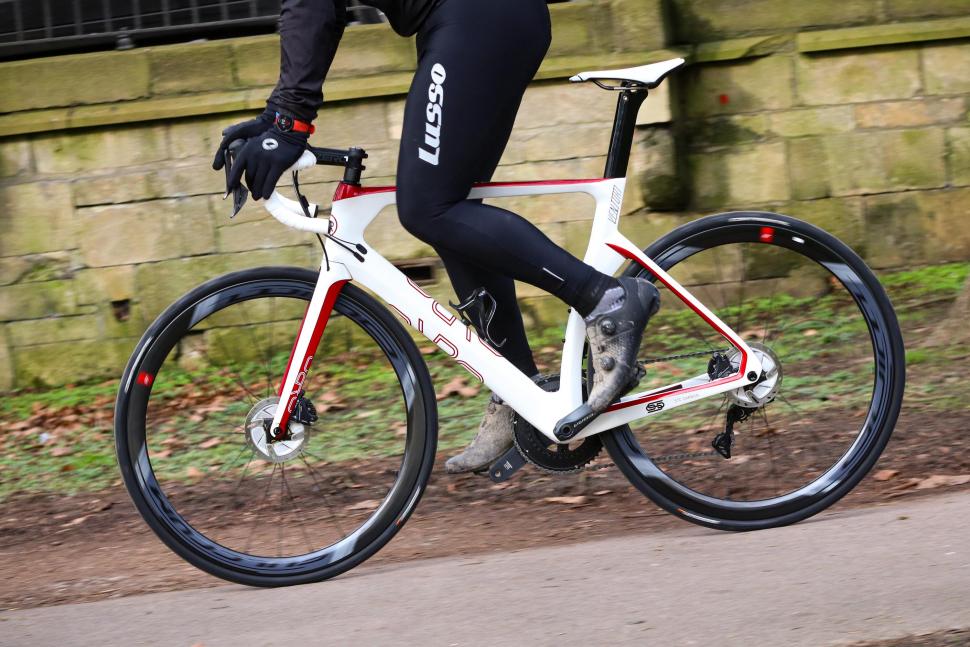
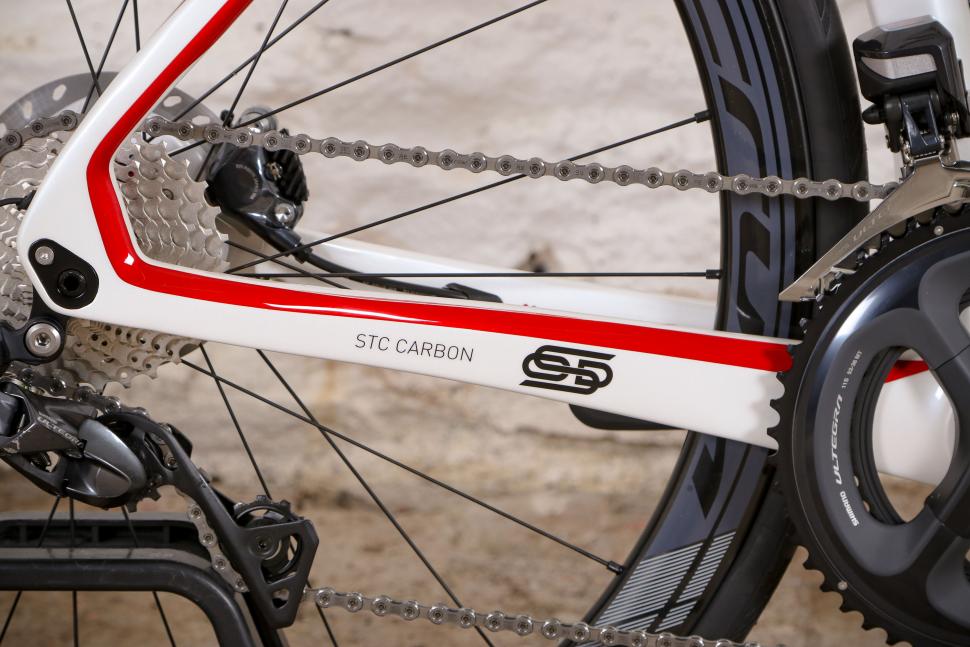

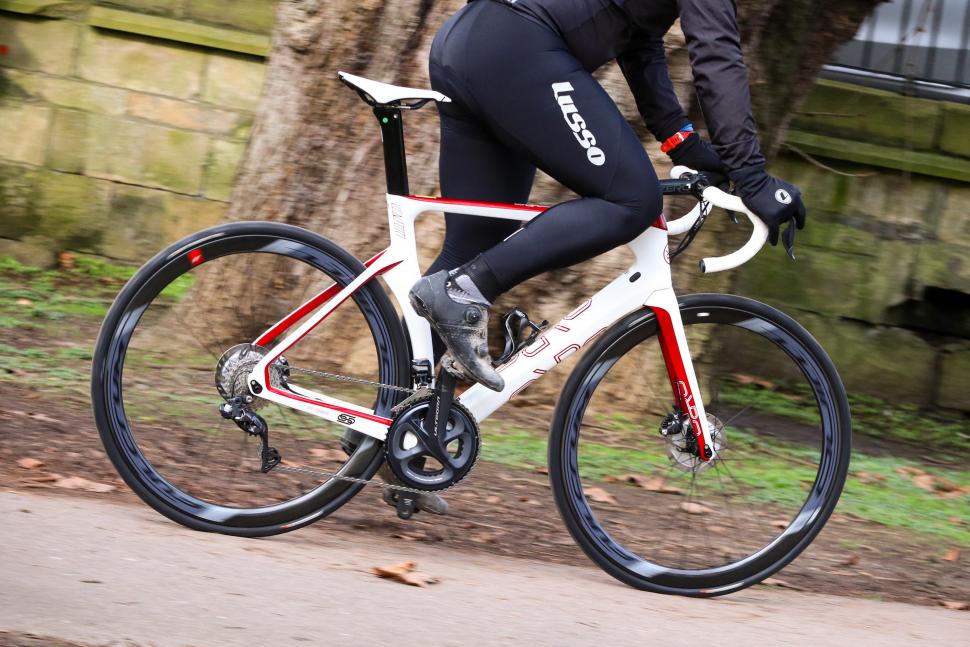
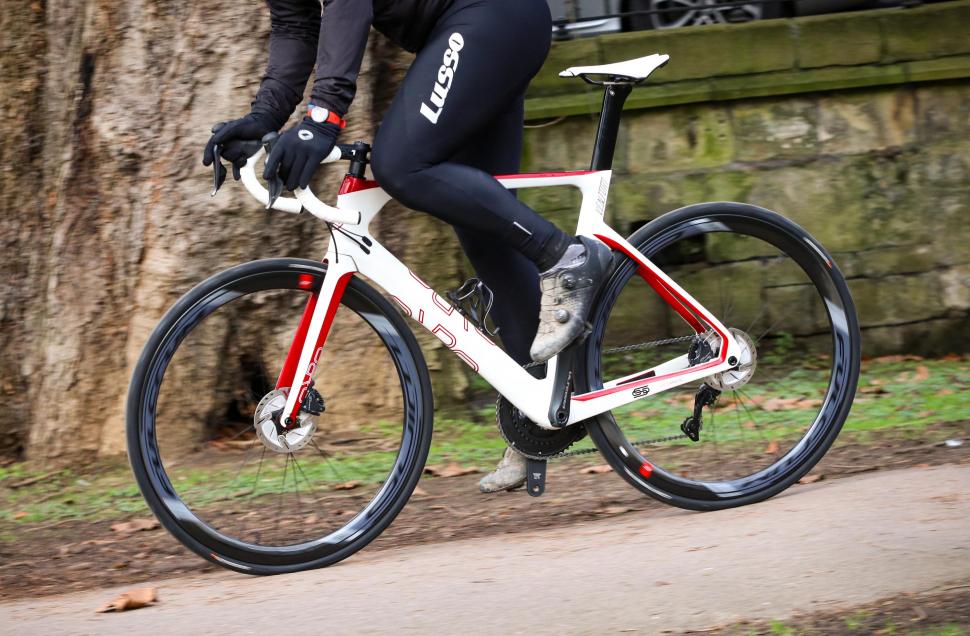
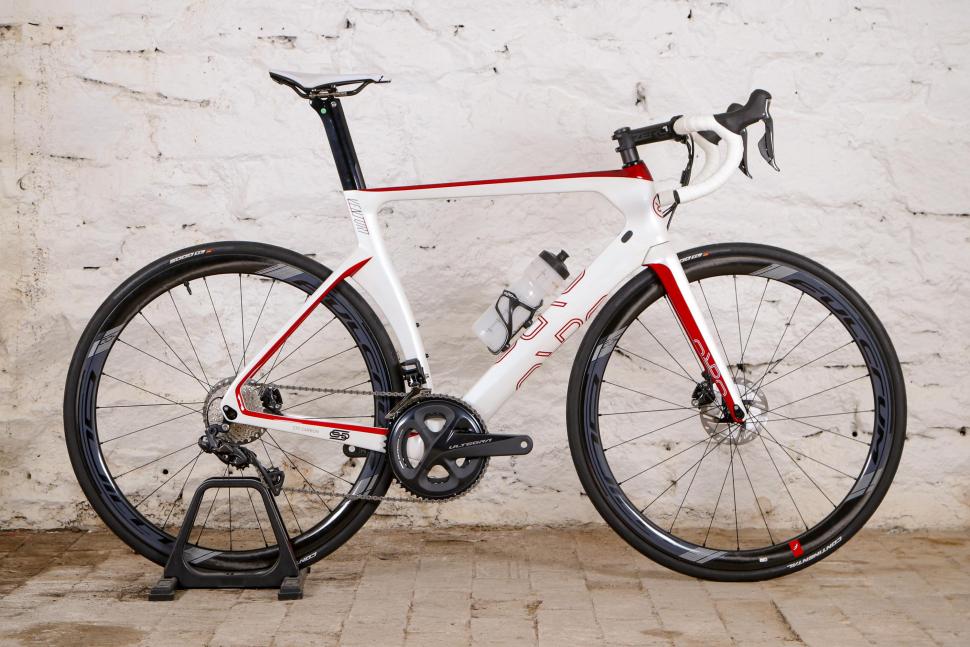

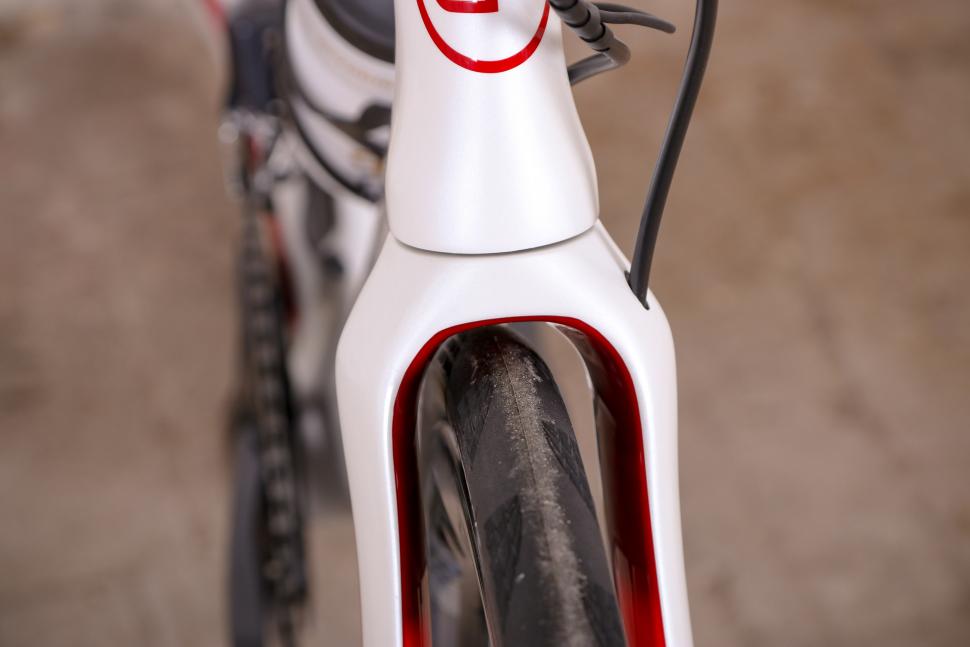
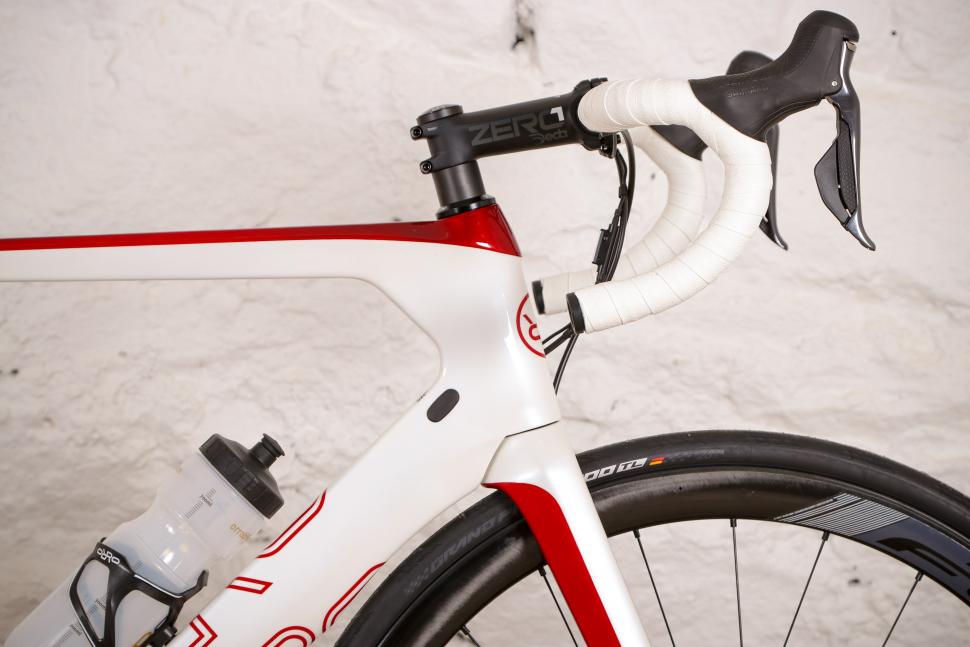





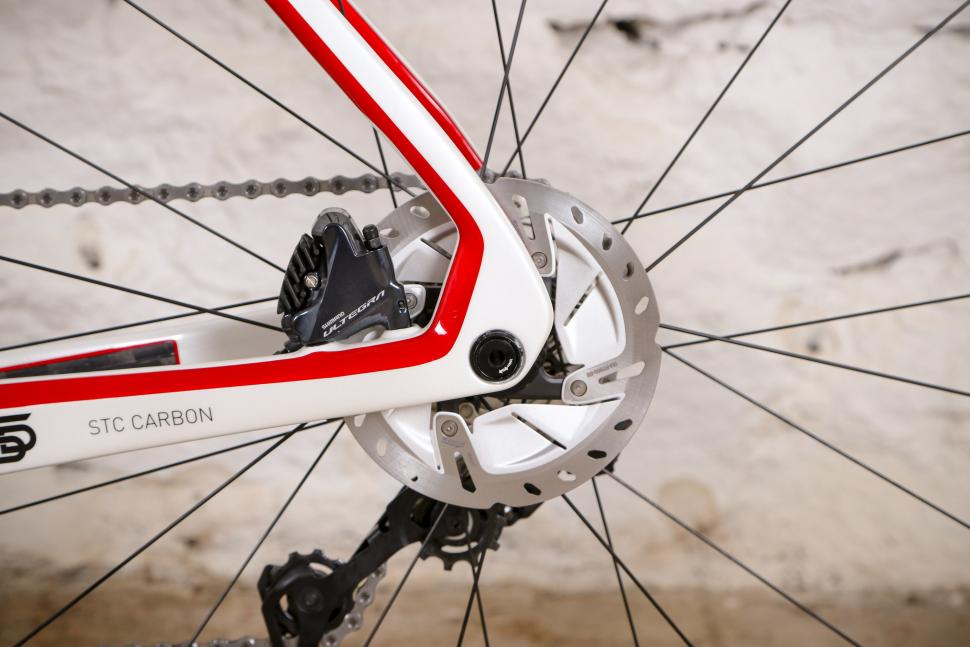
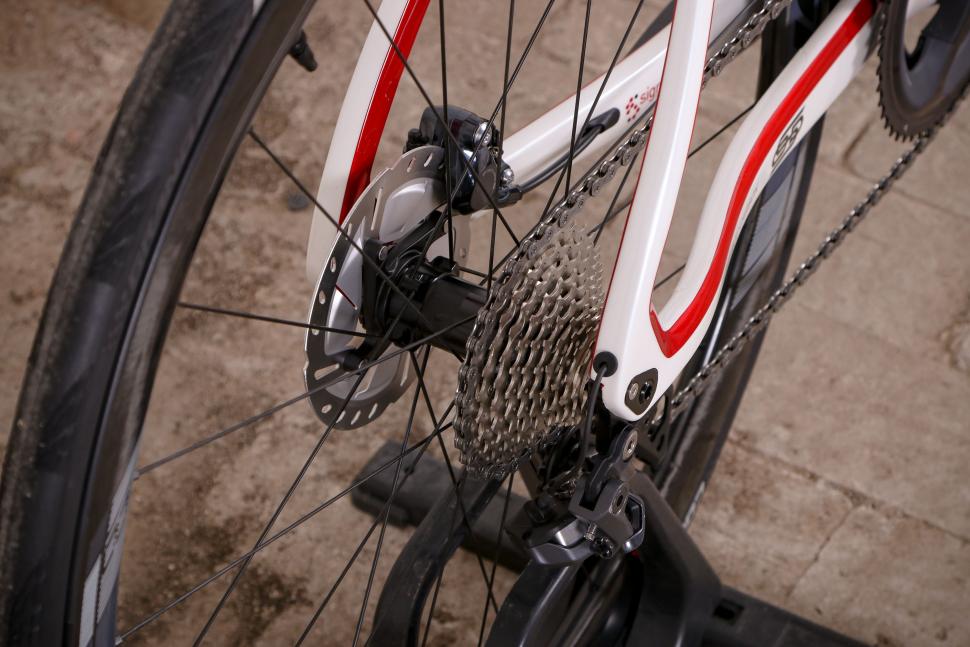
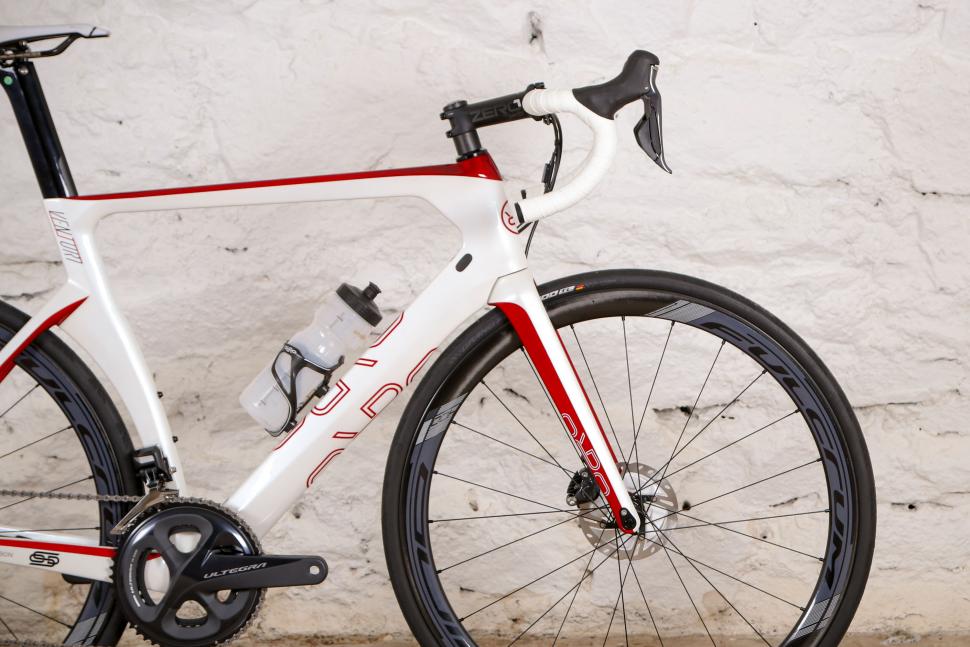

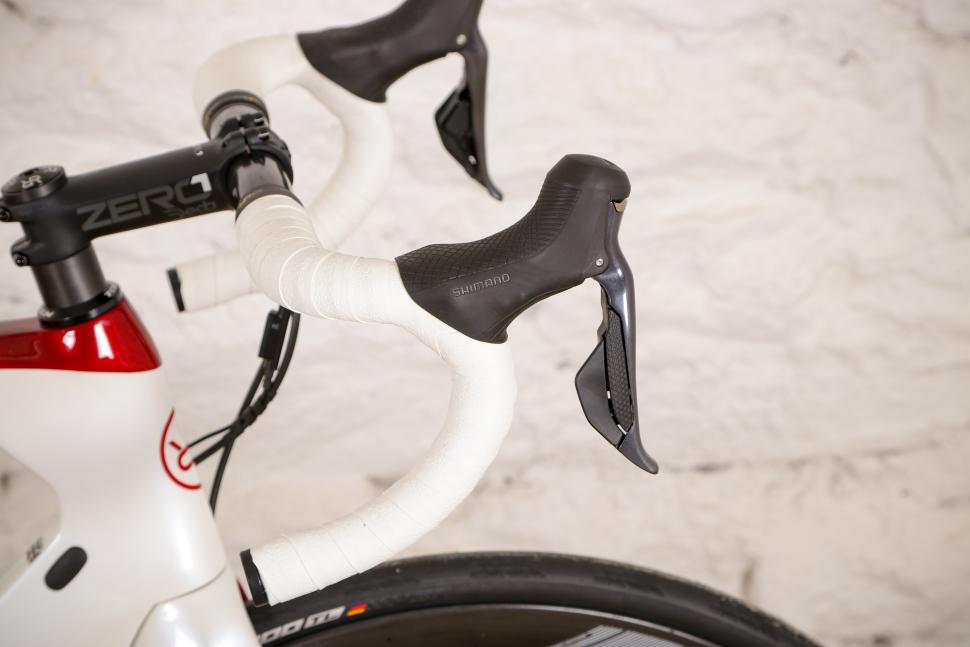


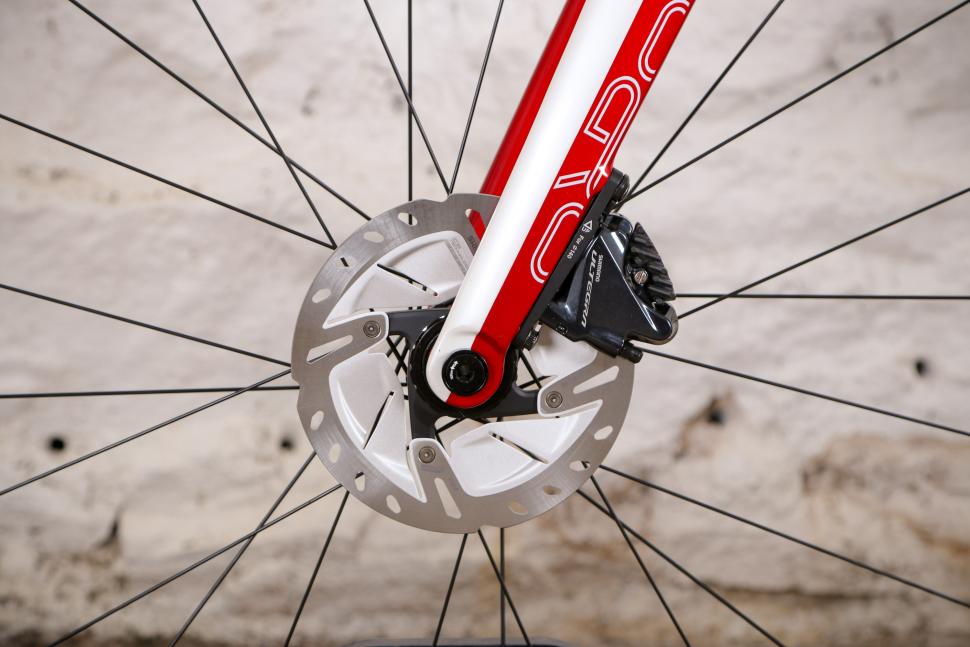




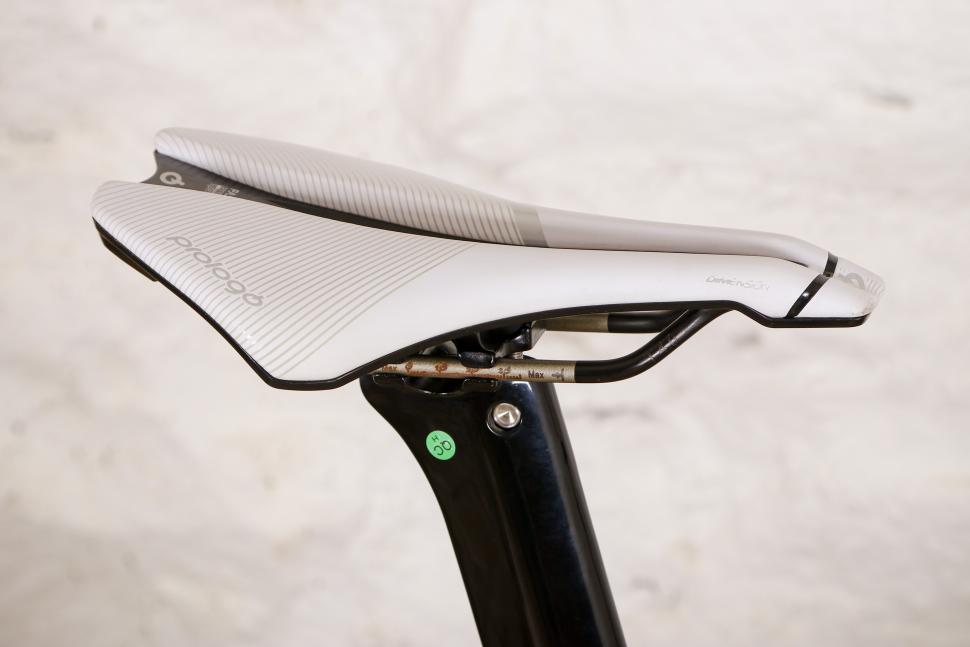
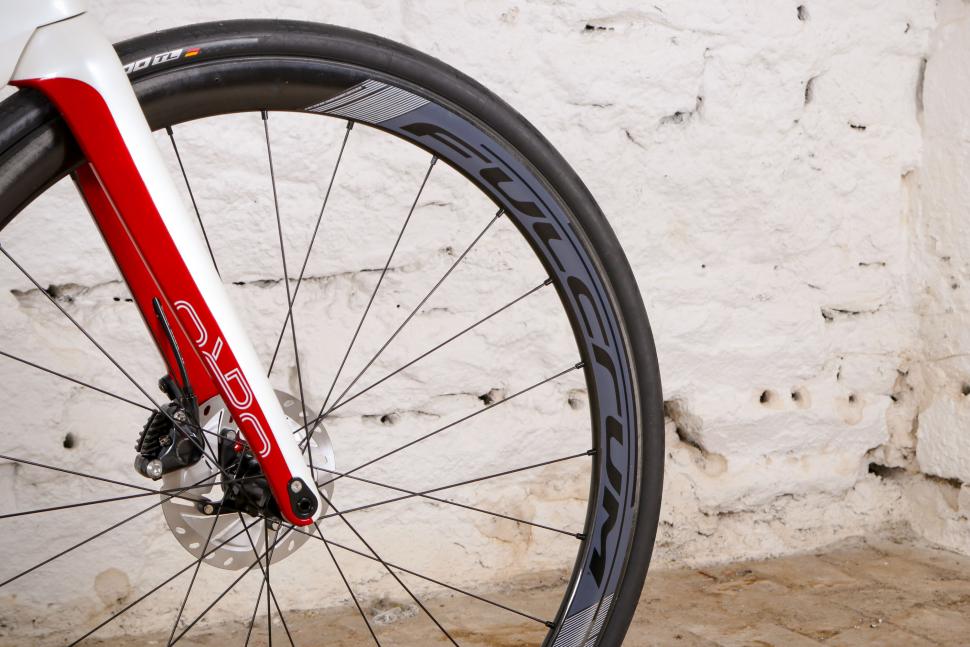
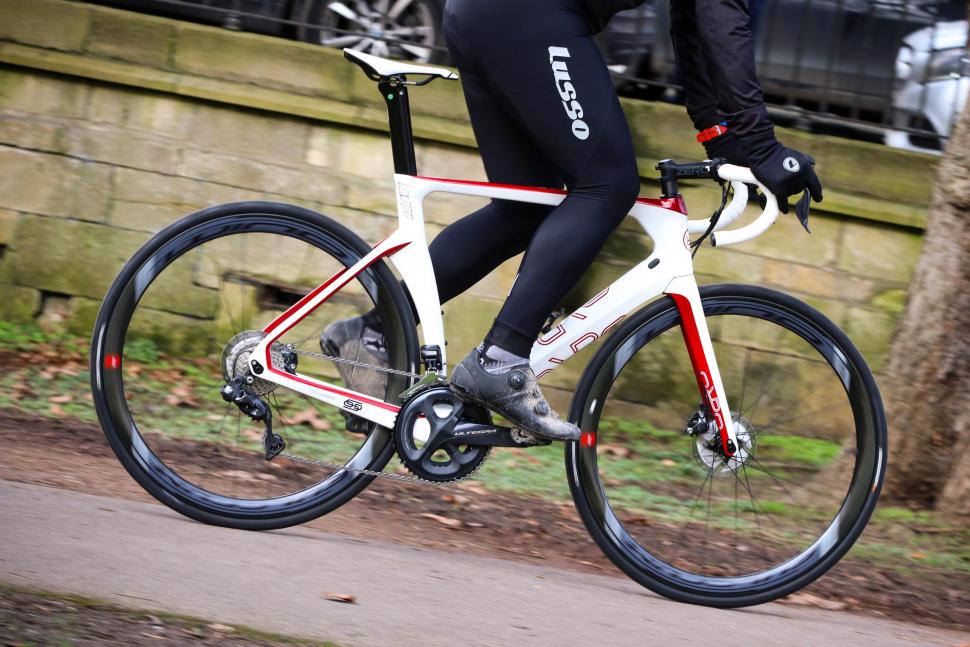
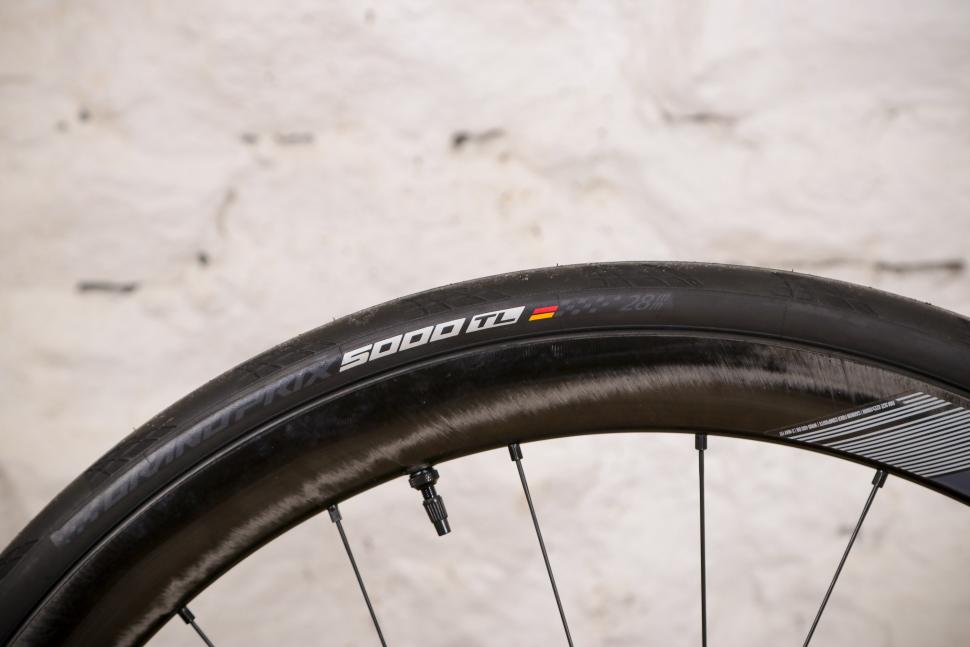



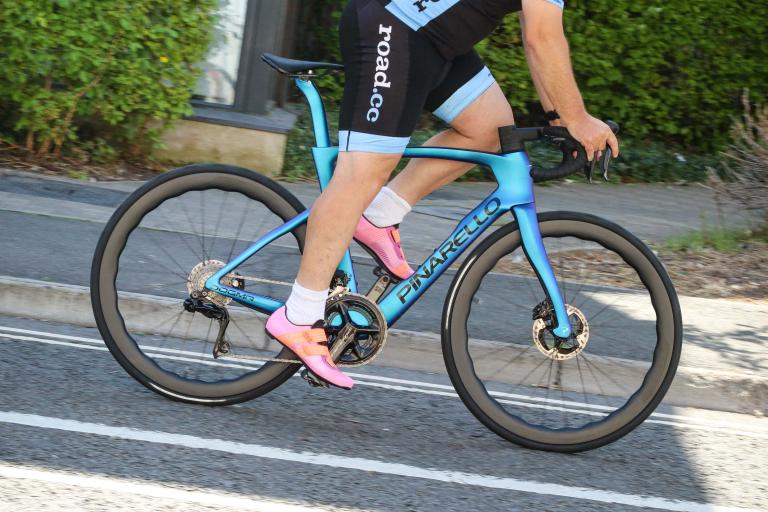
Add new comment
20 comments
Given the ratings and reviews for the ORRO Venturi I decided to take the plunge and purchased my first "aero" bike. I plumbed for the Ultegra Di2 in stealth black size XL to accommodate a 6'4" frame, but I'd say I'm right on the limit for that size/model.
From the very first ride I was impressed by the handling, comfort and the reaction when you slam the pedals.. although I have to admit my legs didn't thank me the morning after my first 47 miler on it, as that bike positively encourages the need for speed.
Note to self; just because you can put the hammer down it doesn't mean you have to!?
I am interested in getting an aero bike. I would be obliged to know how does a venturi 105 spec compare to a giant propel (105 spec)? Perhaps Road.cc can do a review comparison of the two bikes along with a third choice say a merida reacto??
I bought the Orro Venturi last summer and I'm very happy with it, when I bought it I was scared because it was going to be my first aero bike and I thought it was going to be too harsh but I find it very comfy.
I bought the mechanical ultegra version with the alloy fulcrum wheels and the only bad thing I can say about the bike is that it's quite heavier than my previous rim brake bike, anyway it improved when I upgraded the wheels for a carbon set of 1.4 kg and a integrated carbon handlebar, but even like that my bike is still 8.3 kg I think the 7.9 kg of the review is a bit optimistic. A part from that I think it's one of the best bikes you can buy for that money. Congrats to Orro
I love the look of this bike, the frame and forks that is. I always put my own stuff on. But the geo is too racy. It needs 10mm less on the reach and 10mm more on the stack.
Who is the bike aimed at? A pro team or the people that really buy these bikes? The blocky 40-something with tight hamstrings. I'll bet 90% of the eventual Venturi owners will need 20-30mm of headset spacers. It's a rouse I know. All this aero stuff. I couldn't be less aero if I wore a sandwhich board but I want my bike to be aero. I want it to look "pro" too with as small a headset spacer as possible. Trouble is not many manufacturers are willing to participate in this rouse and keep putting out aero bikes that will inevitably need compromises to make them fit the buyers.
I'd have the Venturi tomorrow but I know it would look pants fitted to me. Maybe an aero headset spacer like those on Basso bikes would make it look more presentable?
Watch this space...
Perhaps while you're at it look at an integrated bar/stem option and bar end Di2 box? I realise this causes other compromises and the cables can't be completely concealed like say a BMC Roadmachine or Cannondale Systemsix however.
It's the only slightly jarring aesthetic element for me; aero bikes have moved on in this area from where the Orro is. Cracking job otherwise!
As soon as you want to mount anything on the bars or have a bike fit and learn that your stem should be a bit longer or shorter, you'll love the classic separate stem/round bars solution. I have round bars on my Canyon while my wife has aero ones. Guess who has problems finding lights which can be safely fitted and then adjusted on the bars? Well, not me. Who is paying through the nose for proprietary Garmin mounts? Not me either.
Yep those are the other compromises I referred to. But perhaps if you're dropping £4K on an aero bike you have another one for when it's dark 😉
Nice! Although I do think another 10mm on the headtube and 10mm less on the top tube (across all sizes) wouldn't cause any issues and would allow a more universal fit.
I read a first look article for an aero bike that basically said it's more aero than the others because it's got a shorter head tube and therefore the rider will be lower...or, more likely the rider will need another spacer.
Cervelo years ago said they increased the stack height of their bikes because a vast majority of what they could see being ridden (pictures on forums etc) had quite a lot of headset spacers. The pros who then rode those bikes used negative rise stems. Simple really when you think about it.
With all respect It looks to me like a Canyon Aeroad with a diffrent pint job. Nice to read the review. Orro strong name stunding up I see. Cheers
Looks a lovely bike. Not in the market for a new bike but if I was this would definitely be on my list.
It seems a bit sneaky to send a bike for test with non standard bar, saddle and tyres.
The ride feel could be very different with the standard components.
Is this standard practice in the industry or are Orro being a bit cheeky here?
Hi Rich,
The model reviewed comes as standard with Deda Zero 1 bar, Prologo Dimension saddle and Conti GP5000's. The build kit does differ for other models in the Venturi range.
Thanks for clarifying.
The review seems to suggest that different tyres and saddle come as standard.
Gorgeous bike and not being a generic open mold designed in UK is a big plus in my eyes. Question: you say it has an external bb but the Orro website lists it as having a bb86 which is a press-fit standard. Where does the truth lie?
I was going to askthe same question. Doesn't really add up.
Hi!
Our Venturi's do in fact use a BB86 bottom bracket, as listed on our website.
When you like the saddle, why do you never sit down in the fotos?
Is there a reason that fotos in the reviews almost always show the rider out of the saddle?
I would like to have fotos as well with the rider seated as that would give a better impression how aggressive or relaxed the riding position is.
two reasons, predominantly:
1) the pics look better
2) because of the position of the rider, you see more of the actual bike
There's just something about this bike man...
I created an account on here, just to comment on how beautiful it looked in your first look preview. My local bike shop stocks them, and I'm always bewitched by them.
Now I've seen that it rides as well as it looks, I want one more than anything. I can't in any way justify it, but if my circumstances changed or, god forbid, something happened to my current road bike, I'd buy one of these in a heartbeat.